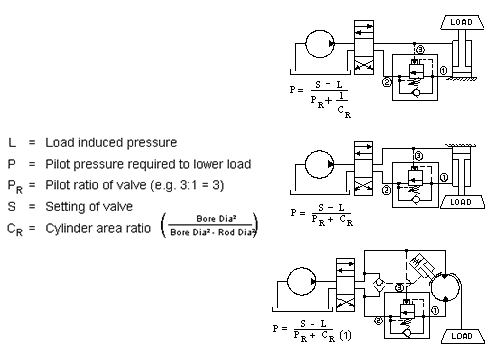How do I know how much pilot pressure is required to lower a load with a counterbalance valve?
Frequently Asked Questions
How do I know how much pilot pressure is required to lower a load with a counterbalance valve?
Two areas work to open a counterbalance valve, the relief area and the pilot area; the pilot area divided by the relief area equals the pilot ratio. Reverse flow from port 1 to port 2 is blocked by the check valve until a pilot pressure is sensed at port 3 (pilot) that is inversely proportional to the load pressure at port 1 (load). The pilot pressure at port 3 effectively reduces the relief valve setting. The setting is reduced according to the ratio of the differential pilot area on the piston compared to the differential relief area. For example, in a valve with a 3:1 pilot ratio, set for 3000 psi with a load of 2000 psi, the pilot pressure required to open the relief valve is 333 psi, i.e. (3000 psi - 2000 psi)/3 = 333 psi pilot pressure.
To calculate the pressure required to lower a load, use the following equations. These equations are under ideal conditions and do not consider any backpressure in the circuit or any effects of temperature on the oil.

